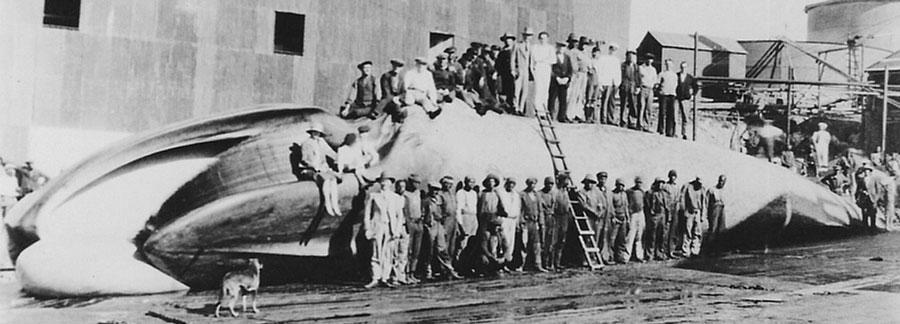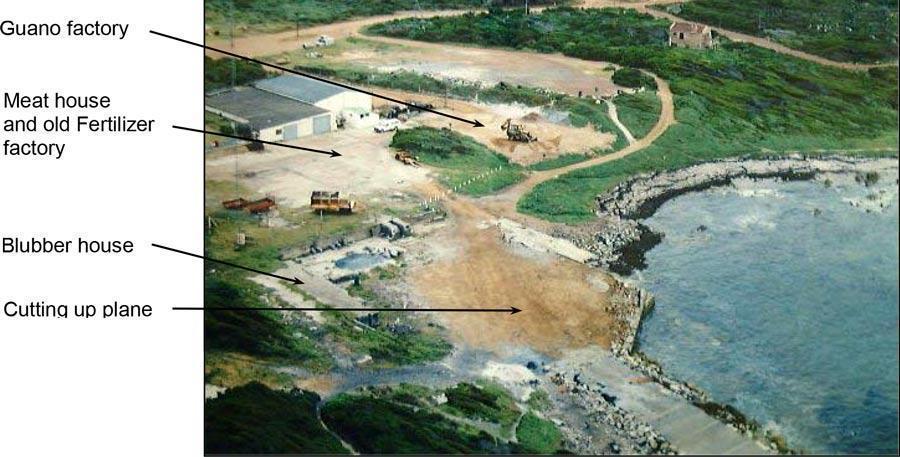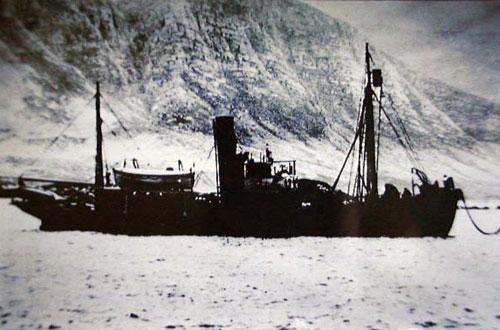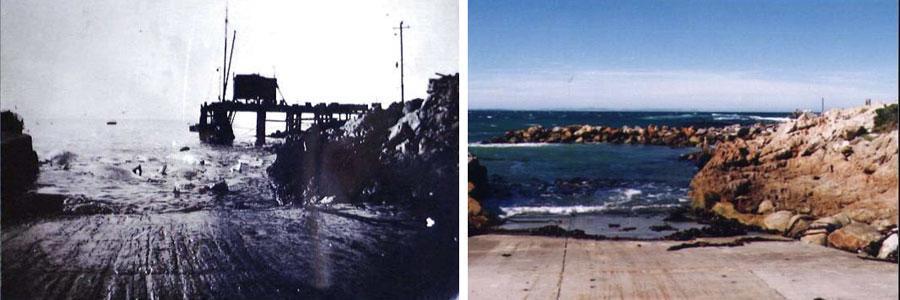Thar She Blows! The Old Whaling Station at Stoney Point, Betty’s Bay
Situated in Betty’s Bay and close to the Stony Point Penguin Colony, lies a site that was once a place of terrible cruelty and devastation, the Waaygat Whaling Station.

All that remains of the old whaling station, today, are the foundations of some of the main buildings; the remains of the old blubber tanks; the rails line, the original slip way and the two houses which had been managers' houses when the whaling station was in operation. A large municipal shed stands on the site was built more recently after the whaling station had ceased to function.
These are scarce reminder of the large constructions, which used to stand there. The buildings were set on concrete and made of timber and corrugated iron. They were the Boiler shed, the blubber house, the Oil Storage tanks, the employee’s quarters, meat house, guano factory and pump house. Some of these structures were three stories high. Photos can be viewed at the Whaling Station Restaurant in Betty's Bay.

Years ago, as far as 1788, British, French and Americans came to South African waters to hunt the great southern rights.
From the years 1913 to 1930 two whaling boats hunted whales in the seas off Hangklip-Kleinmond and brought them  ashore at Stony Point to be processed at the Whaling Station. In 1913 the first year's catch was 179 whales but in later years went up 300 in a season.
ashore at Stony Point to be processed at the Whaling Station. In 1913 the first year's catch was 179 whales but in later years went up 300 in a season.
Photo on the right: of the steam powered whale catcher Southern Cross tethered to the mooring buoy.
The Southern right whale, which frequents the shores of Hangklip-Kleinmond, was the most hunted.
Photo on the left: A southern Right whale on the cutting up plane with the blubber house in the background. Very few Right whales were processed here.
They were brought in by the two steamboats (Southern Cross and Blink), which would anchor off the small natural harbour. The whales would be pulled up the slipway by a winch and rope to the cutting plane. There they would be cut up and carried to the meat and Blubber houses by push trolleys. You can still see some of the tracks. Oil from the blubber was pumped into the large storage tanks to be later pumped to transport ships destined for Europe where it was used for lighting and lubricating machinery.
Mr. Frank Cook from the Southern Cross Waling Company leased 60 acres of land owned by a Mr. Walsh, in 1912. Permission to set up a whaling station was granted by the Department of lands, Cape Town. Mr. Cook employed a small group of Norwegians, the whaling experts at the time, to build the station and manage the factories. In 1917, Irvin & Johnson Ltd. took over the whaling station, which they operated till 1930. In 1926 the fishing trawler the Una was sunk next to the slipway as a breakwater.

Photo Above: From the liquidation document of the Southern Cross Whaling Company: This view is taken from the pier looking N.W., showing the cutting-up plane with incline from the sea. The oil drums in the extreme corner are lying on the tram line in transit to the pier.The explosives magazine is at the back of the first hill immediately behind the flagstaff. [Pre-pumping station - oil was loaded onto ships in barrels.
During the whaling station's heyday, 220 men were employed, most being housed in the quarters at the station. They grew some vegetables for provisions and kept a few pigs. Water was pumped down from a reservoir in the mountains. Other provisions were shipped in and fetched from the ships anchored offshore. Workers rowed out in small rowing boats with rafts to transport the goods, a hazardous experience. A rope was strung from ship to shore to aid the workers in the often windy and stormy seas.

Goods were also brought by wagons to Kleinmond and transported across the Palmiet River by the pont operated near the Palmiet lagoon before the last stretch on a wagon trail to the whaling station. The road from Gordon's Bay had not as yet been constructed.
Today there are plans to reconstruct some of the old buildings to house a whaling museum and information center.
A few views which contrast the past and the present.

Than and now...

Source
Information supplied by the Hangklip-Kleinmond Tourism Bureau
- Photos + Images:
- Hangklip-Kleinmond Tourism Bureau
- INITIAL HISTORICAL STUDY OF WHALING ACTIVITIES AT STONY POINT, BETTY’S BAY. Prepared by David Halkett
- Photos can be viewed at the Whaling Station Restaurant in Betty's Bay. ... some of the old buildings to house a whaling museum and information center
Call us and schedule your listing today! Contact Us
Copyright © 2025 Hermanus Online Magazine. Web Development by Jaydee media.
